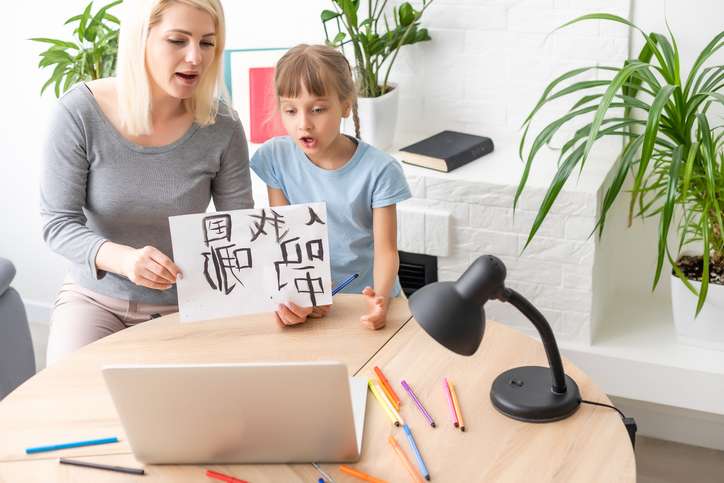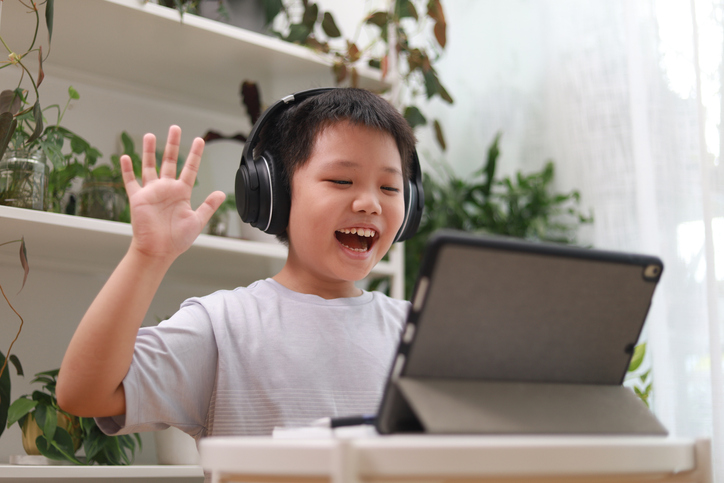How to Encourage Language Learning for Kids and Teens

Do you ever miss the endless creativity, imagination, and sense of wonder that comes with being a kid? Kids are just better at seeing the world in new ways than adults, and that makes them the best candidates to learn another language.
Ask anyone who grew up in a bilingual household will know, younger children absorb new words and languages like a sponge. The brain is the most flexible between ages 0-5, meaning that the time to start learning is now.
Pediatric neurologist Harry Chugani, Director of the Children's PET Center at the Children's Hospital of Michigan in Detroit, believes that the time to learn foreign languages is in preschool and elementary school when the chemistry of the brain is charged for it. When we postpone learning of foreign languages until high school, we aren't paying attention to the biological phenomenon," he says.
When kids compare a foreign language to their own, they begin to understand the nature of language itself. As far back as 1961, studies found that English-speaking students who received instruction in a foreign language showed gains in tests of English grammar, reading, and even math.
"Learning a foreign language increases creativity and cognitive skills. Benefits from early language instruction include improved overall school performance and superior problem-solving skills. The more children learn about a foreign language, the more they understand about their own language," says Nancy Rhodes, Director of Foreign Language Education at the Center for Applied Linguistics in Washington, DC. Most importantly, "foreign language is for all children of any ability," she says. Even kids who get cranky over phonics.
Exposing Kids to New Cultures Through Foreign Language

Learning a foreign language early also builds a bridge between cultures. "At an early age, cultural differences are viewed as different and interesting, not right or wrong," says Harriet Barnett, an educational consultant for the American Council on the Teaching of Foreign Languages. "This early exposure to other ways of speaking and doing things is most effective when children are young and their minds are open," she says.
Several major types of elementary school foreign language programs, summarized below, have emerged in public and private schools. They vary widely, however, from school to school. If none exists in your school, use the resources that follow for help in establishing a program.
Resources for Teaching a Foreign Language at Home
Rather than a school-based program, you can introduce students /to a foreign language at home. It might be easier than you think, particularly if you pick a language that holds special meaning for your family. If, however, she shows an interest in learning a totally new foreign language, that's prime time for learning a new language together.
Start by looking for programs tailored to kids that cover the basics of speaking and writing new languages in fun and engaging ways. The following are excellent examples of a few of the excellent language learning tools and programs on the market:
- LingoAce. LingoAce is an immersive online learning program designed to teach children Mandarin Chinese through a mix of live online classes, interactive animation, and gamification features. Currently, LingoAce is running a special early bird promotion where kids can get up to 24 free lessons through their program! Book your free trial lesson at the LingoAce website.
- Learn Italian Together: An Activity Kit for Kids and Grown-Ups, Ages 4-8 by Marie-Claire Antoine, published by Living Language. Package containing an activity book, cassette, and learning stickers. A teacher's guide is also available.
- Rosetta Stone. Rosetta Stone's language courses have been used by businesses for more than 25 years and have become a trusted way for adults and children alike to learn a second language. Now, the popular app has a custom program for young learners: Rosetta Stone for Kids and Students.
When you work on a foreign language with kindergarten students and young learners use a popular foreign language instructional method called Total Physical Response (TPR). Its multisensory approach responds well to the needs of a broad range of learning styles and differences.
TPR aims to create a brain link between speech and action to boost language and vocabulary learning. This method reduces stress for students, especially younger ones and beginners.
The Benefits of Learning a Language Through Immersion

The TPR method is a great way to help students really understand the intent and meaning of a foreign language beyond just simply translating sentences. The pairing of gestures with language is innately associated with effective learning (which is why many teachers naturally use this method during physical classroom instruction).
Especially for languages like Mandarin Chinese that use different characters and images than the Roman alphabet, illustrating words and sentences through hand gestures and exaggerated movements, helps these concepts stick in your child’s mind.
The Total Physical Response Theory is one of the 5 principles of teaching new languages LingoAce’s experts recommend parents and teachers employ when enrolling their kids in online language classes. Overall, the program advocates for combining multiple senses, learning styles, and techniques to create a truly immersive environment.
Unlike workbook assignments or pre-recorded tutorials, immersive language learning puts students in a real-life language environment. Just as students pick up foreign language skills more quickly in study abroad programs or living with native-speaking families, online language increases exposure to the new language and helps them actually learn to think in Chinese (or Spanish, French, etc.). It’s not workbooks and memorization. Instead, kids get to participate in an authentic cultural environment.
The Advantage of Hiring a Native Speaker Tutor
When it comes to mastering a brand new language, all the books in the world can’t replace the specialized instruction of a native speaker! Many parents don’t have the time or skill-sets to teach their children a new language, so why not bring in an expert?
Millions of people around the world offer tutoring services and classes for kids and adults interested in growing their foreign language skills. And with the big shift to remote work and online learning in recent years, it’s easier than ever to bring a tutor right into your home.
Online tutoring typically means smaller class sizes, customized curriculums, and more personalized instruction. Unlike simply watching instructional videos on YouTube or completing packets, a qualified native-speaking teacher will be able to build a genuine interest in the culture behind a language and make lessons feel more rewarding than regular school assignments.
By going through a program like LingoAce or Verbling, parents don’t need to spend hours trying to find the perfect tutor to meet their kid's needs and skill levels. LingoAce matches kids with experienced teachers based on their language proficiency level. Kids can also earn rewards for completing different courses and expanding their vocabulary.
Using a native tutor and attending live online classes also allows teachers to give immediate feedback and praise during each lesson. LingoAce intentionally keeps their class sizes small (1-to-1 or 1-to-4) in order to build a safe learning environment that provides a friendly, personalized learning experience.
No kid can expect to become bilingual overnight. But by starting early, and establishing a consistent, stimulating, and immersive approach to learning, any kid can discover new ways of communicating and gain skills that will set them up for long-term future success.

